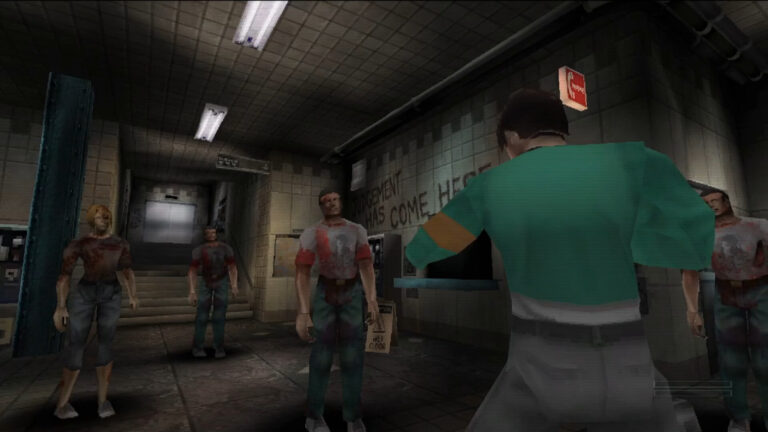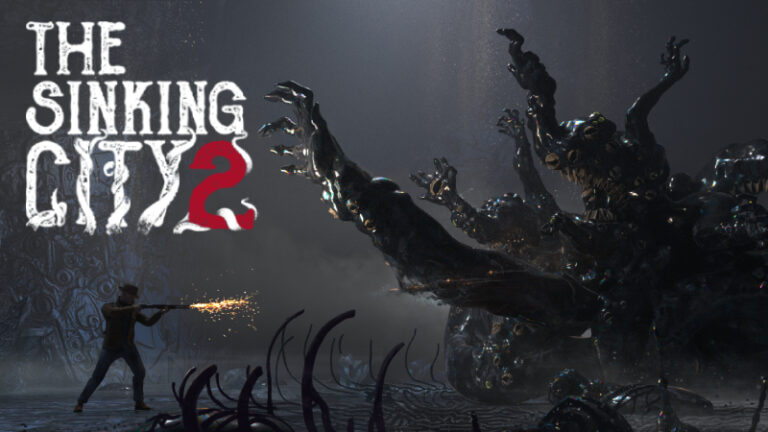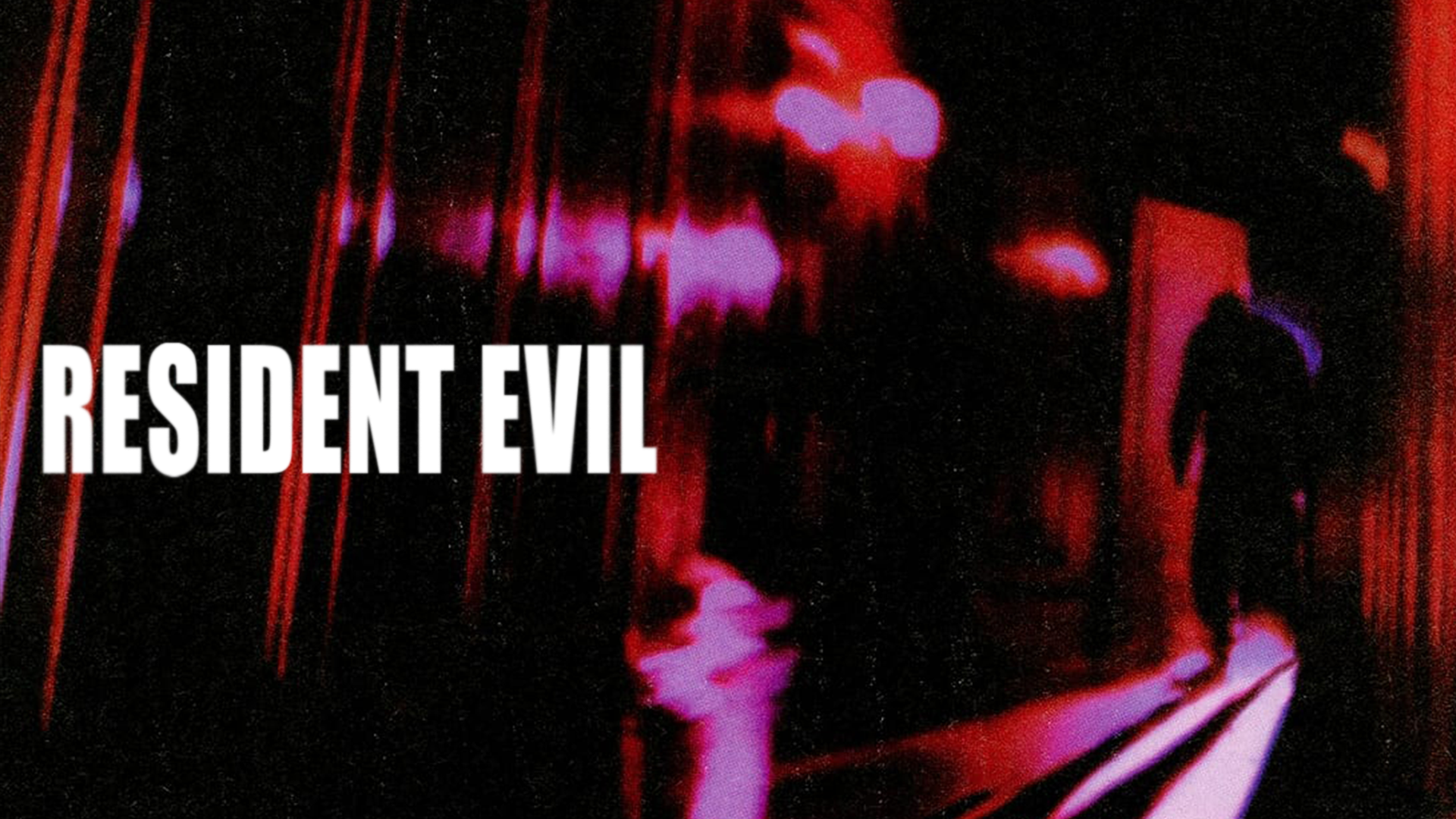
The remakes of Resident Evil 2 and Resident Evil 3 have come and gone, and in so doing have brought in an entirely new generation of fans. Lots of new faces have flocked to the fan base after experiencing these retellings of the classics, asking: where should they go from here? I’ve previously written starter’s guides for playing Resident Evil 2 (1998) and Resident Evil 3: Nemesis (1999), going over the best versions to play, some starter tips, and skimmed a few of the bonus features along the way. To follow up on those, I’ve put together a similar article going over the details of the one that started it all and codified the survival horror genre — Resident Evil (1996).
Yet again, I’ll be breaking down everything you need to know in order to outlive the original survival horror classic from so very many years ago, and covering some bonuses towards the end. I should note, this isn’t going to cover Resident Evil REmake (aka RE ’02/REmaster/REbirth), which is an entirely different game in much the same way the latest remakes of Resident Evil 2 and 3 are. This pertains only to the PlayStation 1 original, and its subsequent ports and re-releases.
Platform
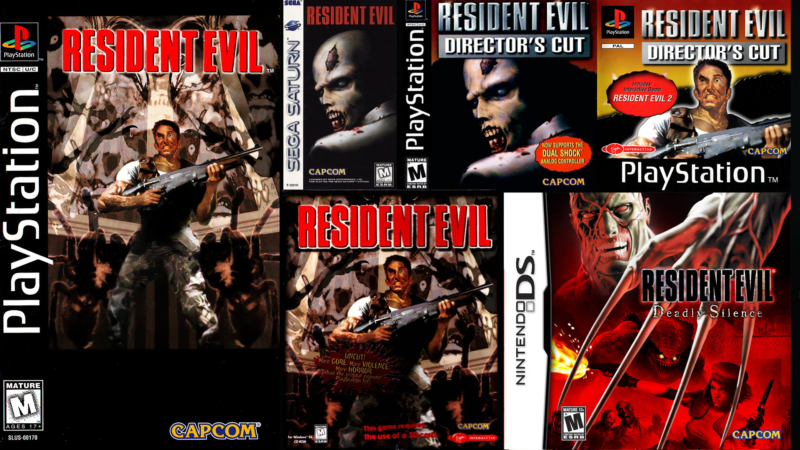
Just like nearly every other game in the franchise, Resident Evil (1996) has been ported and re-released constantly, with the most recent re-release only being two years ago. This can make it difficult to figure out which version to grab when you’re just starting out with the game, as each is wildly different from one another. The core experience is still there across all versions, but each release offers a different set of bonuses and changes, some of which are major (and literal) game-changers. Again, I won’t be covering the 2002 remake, (nor will I be covering the unreleased but playable Demake on GameBoy Color), so this is restricted only to versions of the original game. I’ll be breaking them down in the following order of release:
Resident Evil (PlayStation)
This is the original 1996 version and it’s as vanilla as it gets in terms of content. Offering only the original Jill and Chris campaigns, an extra costume apiece for completing their modes, and a bonus weapon for clear time. This version also doesn’t support analog sticks, meaning you’ll be restricted to the D-pad for movement. While still a classic, you’d be getting the least bang for your buck here, with used copies ranging from $3 for the standard jewel case version to $150 for the launch, long box version. The only reason you’d want to own this version is if you’re a die-hard collector.
Resident Evil (Windows)
This version released just a short while after the original PlayStation version and offers more or less the same experience. The one major difference being that it was the only international version to showcase both the full, uncensored opening and head-turner cutscenes. This version also included a new costume apiece for Jill and Chris and a new unlockable weapon apiece as well. The other big bonus is that you can skip the door loading screens. This version can still be played on modern PCs with a little finagling, although honestly, I’m not sure it’s worth it. It’s fun to see the differences and the models are crisper, but eh. Pricing for physical copies is a bit all over the place, ranging from $60-$300 at the time of editing.
Resident Evil (Sega Saturn)
Following the Windows 95 release, the Saturn version tried to offer a little bit more than the previous two did. Adding in an all-new ‘Battle Game’, a new costume apiece for Chris and Jill, and the replacement of the Hunter enemy with reskinned creatures called Ticks. They’re literally just brown Hunters, so it’s not really a big deal. Aside from the Battle Mode, this version doesn’t stand out much from the other two.
Resident Evil: Director’s Cut (PlayStation/PlayStation Classic/PlayStation 4/PlayStation 5)
A remarkably massive upgrade, Resident Evil: Director’s Cut is arguably one of the most advanced leap-ups in the entire franchise while still being the same game. Released as an apology of sorts (if you can call something you have to pay for an apology) for the year-long delay of Resident Evil 2, Director’s Cut offered an all-new ‘Advanced’ mode, which saw a variety of small to massive changes to mix up the experience (I’ll explain these further in the Secrets and Bonus Content section). While this version still doesn’t support analog sticks (although it does add a lock-on feature when aiming) it’s a significantly better investment over the original vanilla version. While you can find original PlayStation copies for around $10-30, it was recently included in 2018’s PlayStation Classic console, which runs about $50-$80 and includes a bunch of other games.
UPDATE: Resident Evil: Director’s Cut has recently been added to PlayStation’s new PS+ Premium subscription service, and can be played on PlayStation 4 and Playstation 5). This is now arguably the best and easiest available version of the title thanks to additions such as new HD upscaling and fast forward/rewind functions and the ability to save anywhere, as well as adding in analog support.
Resident Evil: Director’s Cut — Dual Shock Ver. (PlayStation/PlayStation 3/PSP/PlayStation Vita)
Released the following year to capitalize on the release of PlayStation’s new Dual Shock controller, this version is nearly identical, save for the inclusion of the Dual Shock’s rumble feature and analog support. It also features a new, and famously much worse score composed by fraud composer Mamoru Samuragochi. Aside from the mostly awful new soundtrack (I do like a track or two), this is generally considered the best version to get on PlayStation. It’s also probably the most accessible these days as well, available across multiple PlayStation platforms thanks to being sold digitally on PlayStation Network (although that may be ending soon, as the ability to purchase PSN games is becoming more and more limited).
Resident Evil: Deadly Silence (Nintendo DS)
The final full port of Resident Evil 1 and my personal preferred version. Releasing for the game’s 10th anniversary in 2006, Deadly Silence edges on almost being a remake, remastering character models and re-recording the original score, along with adding in a smorgasbord of new features and content. Starting out, the first major changes include the addition of some of Resident Evil 4’s quality of life improvements, like the knife being removed from your inventory and bound to the L button, the 180-degree quick turn from RE3 onwards, and the ability to reload manually without having to combine in your inventory.
There are also new costumes for Chris, Jill, and Rebecca, along with some other changes like touch-screen controls for the inventory and the map displaying your location in real-time on the top screen (which also displays your health based on the color of the background). Along with all of that, while it doesn’t include the Director’s Cut‘s Arrange Mode, it does include the all-new Rebirth mode that remixes gameplay to include all-new puzzles and events that utilize the DS’s touch screen and microphone.
Deadly Silence will run you about $25-$60 used, but it really is the best way to play the game in my opinion. It’s also the only other version besides the Windows 95 version that allows you to skip the door loading screens, which is rad.
Strategies
So with your preferred version picked out, let’s move on to actually playing the game. Unlike its sequels (yes, even the original Resident Evil 2 and 3), Resident Evil ’96 is a pure survival horror experience that’s brutal to its core. Even the most minor mistakes can cause you to reset massive amounts of progress, and the experience is slow and grueling. No automatic weapons or exploding barrels here, friend — this is Resident Evil at it’s purest and most uncut. Sagacious as I am, even I get my ass handed to me sometimes if I’m not careful. As such, it’s important to know going in exactly what you’ll be dealing with.
Jill and Chris

Unlike Resident Evil’s (1996) follow-ups, the difference between Jill and Chris in the original is more than story changes — they’re actually difficulty levels. Jill acts as this game’s easy mode, often being rescued by her friends when in trouble, having access to more powerful weaponry, and possessing two extra inventory slots. Chris, on the other hand, is limited to only 6 inventory slots, is never rescued by his friends (or rather, the rescuing isn’t out of your hands the way it is for Jill), and you’re forced to carry extra keys with you that Jill “The Master of Unlocking” doesn’t need. There are also story differences like Barry and Rebecca only appearing in Jill and Chris’ stories respectively, and how things play out with other characters like Wesker.
This game also features a very mild choice system that only occurs a few times throughout the story, which affects your relationship with Rebecca/Barry and the ending you get. It’s the only time the series has ever done this, so it stands out as part of the experience here.
Prepare for a fight
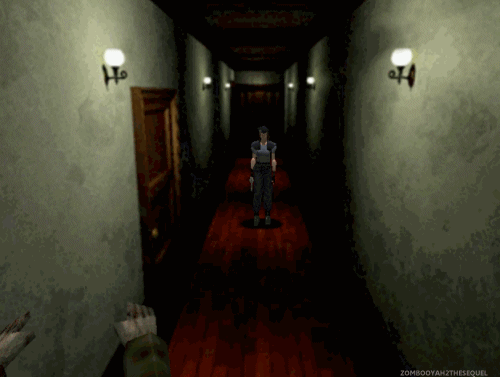
The key part of the survival horror genre is the survival part. Preparing yourself is one of the key aspects of Resident Evil, and it can be incredibly nerve-wracking trying to find just the right sweet spot of preparedness vs. being able to actually acquire new items to progress. As Jill, stacking your inventory is difficult. As Chris, it can feel impossible. Your whole survival hinges on how you balance your inventory and figuring out how to do so are key. My main recommendation is to keep a firearm and ammo on you at all times, along with one healing item. If you’re able to swing it, a second firearm and its ammo is recommended the further you progress, allowing you to diversify your damage output, as the type of foe you face evolves.
Your default weapon for both characters is your Beretta M92FS Saumari Edge, a 15-round pistol that takes about 10 hits to kill the average zombie. As you can surmise, taking that many shots to kill a single zombie means that it’s practically useless against larger creatures. The shotgun is the next step up the ladder from that, a 7-shot Remmington M870 pump-action that can pop a zombie’s head off with one well-placed shot. This weapon is key for fighting off certain creatures, so using it against zombies should be considered a last resort to get out of taking unnecessary damage, rather than wasting the extremely limited ammunition. Jill also gets a special weapon, an ARWEN 37 grenade launcher, which can be loaded with several different types of rounds like Flame and Acid. This weapon is devastating against nearly every enemy in the game, but its ammo is even more limited than the shotgun, so it should be used sparingly.
There are other weapons to be found throughout the mansion, but I’ll leave those for you to discover on your own.
Another key part of surviving is picking and choosing your battles. While RE2 and 3 are more lenient with their ammo and health, Resident Evil (1996) is incredibly stingy, and both are extremely difficult to stockpile. As such, you may find that the more pragmatic approach works out better in the long run. Sure, you might have enough ammo to deal with that zombie…but will you have enough for whatever is waiting in the next room? Suffice it to say, if you don’t have to kill something, you probably shouldn’t. That line of thinking can be applied to other forms of combat as well…
Prepare to get hurt
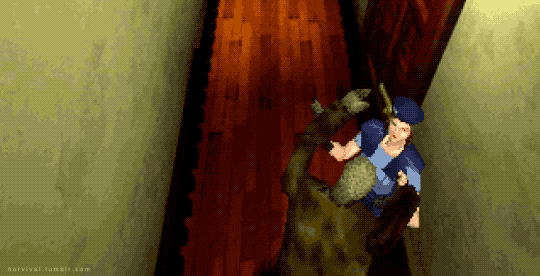
Dishing out damage is key, but making sure you can take it right back is just as important. As I said before, you generally have about 4-5 hits (give or take based on the type of enemy you’re facing, though some have instant-kill moves) before it’s game over. Unlike its sequels, your character will not reflect your health status in the way they move, and you are forced to check your inventory menu for your diagnosis, showing your health as an Electro-Cardio-Gram (ECG), displaying five health stages:
FINE- 75%-100% health.
Yellow Caution- 50%-75% health.
Orange Caution- 25%-50% health
Danger- 1%-25% health (heal immediately!)
Poison – This is a status effect that slowly drains your health over time. Your actual health cannot be seen on the inventory as it’s covered up by the status effect, so cure yourself as quickly as possible. While poison will not kill you outright, it will drain you down to Danger in a matter of minutes, which will get you killed extremely fast.
Like every other RE game, the primary method of healing are Herbs, which come in a variety of colors that grant different effects.
Green – Heals about 25% of your health, good for both bumping yourself up from Yellow Caution to Fine, as well as giving you at least a little breathing room when in Danger. These can be combined with another green herb for a 50% heal, and a third for a 100% heal.
Red – Does nothing on its own (a standard for this item) but can be combined with a single green herb for a 100% heal effect.
Blue –Cures poison, but doesn’t heal the player at all. Can be combined with a green herb to get the best of both worlds, or a red and green herb combo for a full-heal and poison neutralizing mixture.
It’s good to keep at the very least a green herb on you at all times, if not a green herb for minor damage and a red+green mix for major damage. Herbs are one of the most scarce consumables in the entire game, but keeping a sharp eye out and using only when absolutely necessary, you can end up with a plentiful stock by the final sections of the game.
There’s also the First Aid Spray, an item almost as ubiquitous with the series as the herbs, which will instantly heal you 100% on use. That said, it is extremely rare to find, and you should try to limit its use to when you absolutely need it.
Saving

Saving, like every other element of the game, is based around resource management. Saving is limited to Ink Ribbons, a rare item typically found in sets of three in front of a typewriter (which is used to save), although that isn’t always a guaranteed location. This means that saving itself is literally finite, just like ammo and health. There are only about 25 in one entire playthrough and about half of those are hidden outside of safe areas. You can easily run out of ink ribbons and be forced to play without saving until finding another one. Resident Evil (like all classic REs) has no auto-save feature of any kind, and death will reset the player back to the game’s boot-up screen. Saving often but smartly is key. Use your better judgment to decide when the best time to save would be.
In general, a good rule of thumb with saving is to do so once after every “major” event. The completion of a puzzle, after a boss fight, or after opening up a new area for exploration, for example. If you think you can go a little farther, then, by all means, do so. However, it’s your risk vs your reward, of course.
Exploration
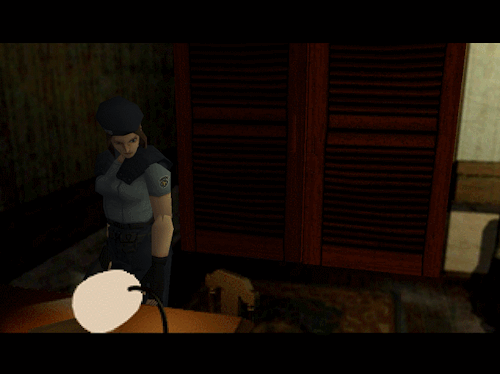
Beyond combat, puzzles, or any other major element of a classic RE experience, exploration remains the centerpiece that all other aspects revolve around. Exploring every nook and cranny is a must for keeping yourself well-stocked, as items can be hidden in devilishly out-of-the-way places. There’s so much to find if you look hard enough, including ammo for nearly all your weapons, health items, and ink ribbons. While some items “sparkle” to indicate there’s something small that you can pick up, this isn’t always the case. Not only can items be hidden in the darkness or beneath other objects, but they can also be found in drawers, cabinets, and behind things.
Check everything, friends. Back in the day, fans would joke that the best way to play classic RE was to walk against the wall and mash the interact button, and it still holds true today. If someplace looks like it might have something hidden there, check it.
Secrets and Bonus Content
While the original Resident Evil doesn’t have quite the avalanche of bonuses its sequels would come with, it did end up getting quite a bit of extra content across its various re-releases. Unlike things like The 4th Survivor (Resident Evil 2) or The Mercenaries (Resident Evil 3: Nemesis), the extra content in Resident Evil (1996) is actually locked to specific versions of the game, and almost none of them cross over between releases (not counting the two releases of Director’s Cut).
Bonus Modes
Battle Game (Saturn)
This bonus mode was included in the Sega Saturn release and is essentially the precursor to what would become The Mercenaries. This minigame sees you playing as either Chris or Jill in a race against time across several stages, from the beginning of the game all the way to the end. You’re only playing for score here, as there are no special rewards for completion other than a sense of pride and accomplishment. You do get to face off against a super zombie version of Wesker, as well as a special golden version of the game’s final boss, so that’s neat.
Advanced Mode (Director’s Cut/Dual Shock Version)
The main selling point of Resident Evil: Director’s Cut, Advanced Mode (as previously stated) offers a remixed version of the main campaign, which includes a number of changes ranging from small to massive. The most obvious changes are a large number of completely new camera angles as well as new costumes for Chris, Jill, and Rebecca that you start the mode wearing, rather than having to unlock them. There are also a handful of new cutscenes as well, which are interesting as they inspired several sequences that appear in REmake 1 (especially involving Rebecca). Item placement and enemy spawning has also been swapped around in some areas, and it can seriously trip up players who are familiar with Normal Mode. It essentially becomes an entirely new game, a middle-ground between Resident Evil Classic and REmake 1. It’s worth the experience, but I recommend it more so to anyone who’s already played the non-Adavanced Mode version of the game, as it’s deliberately designed to be confusing for returning players.
Rebirth Mode (Deadly Silence)
While Arrange Mode is what made Director’s Cut special, Rebirth Mode is what makes Deadly Silence special. Living up to the D and S in the game’s title, Rebirth Mode remixes the main game to include all-new features centered around the unique functionality of the DS – the touch screen, and the microphone. From puzzles where you have to blow out a candle, to playing five finger fillet with your stylus, there’s well over a dozen completely new and unique puzzles and events that supersede most of the original puzzles. In some cases, the puzzles are entirely brand new and not replacing anything. Rebirth Mode also includes a few secret touch screen functions that you’ll have to discover on your own.
Along with this, there’s some item and enemy rearrangement, a new boss-fight with a classic enemy, and semi-random ‘First Person Knifer’ challenges upon entering certain areas. These ‘Knifer’ challenges see you combatting enemies from throughout the game in first-person mode, slashing at them with your knife via the stylus. This mode only unlocks after completing the normal version of the game, but it’s worth a full playthrough just on its own.
Multi-Card Play (Deadly Silence)
One of the wildest oddities about the Deadly Silence version of Resident Evil is the inclusion of a multiplayer mode, both co-op and versus. This was Resident Evil‘s third outing with any sort of multiplayer experience, following the two Outbreak games on PlayStation 2. It operates similarly to the Saturn’s Battle Game, in that you race against the clock to escape, only now in co-op and featuring several of Rebirth Mode’s extra DS mechanics.
The most remarkable thing about Multi-Cart Play is that it features almost the entirety of S.T.A.R.S. as playable characters, the majority of which aren’t playable in anything else (nor have they even been animated before, in some cases). Everyone is here, save for Edward Dewey from Resident Evil 0, and Brad Vickers (neither of which had models in RE1, and Dewey is arguably not even canon to this game). It’s pretty bitchin’ if you’re a fan of the team, and lots of fans have wished that the mode was playable offline because of it. While the game supports up to four players, sadly yours is the only character actually present on screen, while the other three are represented by floating stars. I’ve never known what the exact reason for this is, but my best guess is that it was a limitation of the engine. It’s a shame, but still fun to play if you have a friend(s) that also own a copy, as it’s LAN only.
Master of Knifing (Deadly Silence)
After completing Rebirth Mode, you unlock Master of Knifing, which is the ‘First Person Knifer’ events expanded into a fully-featured mini-game, In it, you slash your way through several stages, starting in the mansion and going through until about the game’s middle-point. Speaking from personal experience, it’s incredibly addictive and there are lots of little tricks you can discover to maximize your points and reach a better score. Clearing the game with a B rank or higher with Chris and Jill will unlock characters for Multi-Cart Play, which is pretty cool (it starts with just Chris and Jill unlocked). Honestly, this’d make a pretty great mobile game, and I’m surprised Capcom hasn’t returned to the concept.
Unlockables Weapons
Infinite Rocket Launcher – Resident Evil‘s classic unlockable weapon, this is the endgame’s M202 FLASH rocket launcher equipped with an infinite supply of rockets. You get this for clearing the main game on any mode as either character in three hours or less, although it stays locked to that save for repeat playthroughs. If you unlock it as Jill, you can only use it as Jill on that save until you unlock it as Chris on his own save. Once you’ve got it though, it’s in your inventory from the word go and can kill literally everything in the game in one shot. This can be unlocked in all versions.
Infinite Colt Python – available only in Resident Evil: Director’s Cut, Barry’s best friend is unlocked by beating the game on Advanced Mode, which can also be stacked with getting the Infinite Rocket Launcher for beating Advanced Mode in 3 hours or less.
Ingram (Windows Only) – This weapon, a specialized M-10 machine pistol with infinite ammo, is unlocked by completing the game as Jill in four hours or less. Like the Infinite Rocket Launcher, the Ingram remains exclusive to that save slot, but unlike the launcher, it can only be unlocked as Jill.
Minimi (Windows Only) – This weapon, a specialized FN Minimi full-auto machine gun with infinite ammo, is unlocked by completing the game as Chris in four hours or less. Just like the Ingram, it’s exclusive to that save slot and can only be unlocked as Chris.
Unlockable Costumes
Costumes are a staple of this franchise, however, they come with an odd catch. Just like Resident Evil 2 and Resident Evil 3: Nemesis, this game does not give you the ability to start the game wearing your costume of choice. Instead, you are forced to hunt down one of the game’s safe rooms (after clearing the game and getting the best possible ending), and acquire the Closet Key from the Inventory Box. This key is then used to unlock a special room located in the mansion that you previously couldn’t access, enabling you to change into a new costume. Weirdly complicated, if I’m being perfectly honest, and hacks off about the first 20 minutes of play in the new costume.
While all versions include the original unlockable vanilla release costumes for Jill and Chris, all subsequent versions only offered one more apiece. Interestingly, two versions give Rebecca a new costume as well.
Chris
Vanilla – A brown leather jacket emblazoned with an angel dropping a bomb and the phrase “Made in Heaven” scrawled across the top, and tan slacks (this is the same jacket seen hanging next to Chris’ desk in the R.P.D. S.T.A.R.S. office, and the brother to Claire’s classic vest with the same embroidery).
Windows – A dark blue motorcycle jacket with a shield symbol on the breast, collared blue shirt and yellow tie, and black pants.
Saturn – A black kevlar vest overtop of a navy blue uniform. Vaguely reminiscent of Leon’s REmake 2 uniform, actually.
Director’s Cut – Essentially a ‘dude version’ of Jill’s S.T.A.R.S. uniform. White t-shirt with oversized black shoulder pads and buckles, with dark green pants. This is the default costume for Arrange Mode.
Deadly Silence – A grey and black Halloween-store tier ninja costume, complete with face cover and gold fringe.
Jill
Vanilla – A black, low-cut crop top and black jeans, complete with a necklace and a short haircut, similar to that of Mokoto Kusanagi from Ghost in the Shell (Jill actually has long hair under her hat in this game, so this is actually an alternate haircut, although it clearly became her default look later).
Windows – Basically a reskin of her Vanilla costume. A red, low-cut crop top and blue short shorts, with black leggings and red sneakers. The necklace and hair remain from the previous costume.
Saturn – Basically a recolor of Jill’s default S.T.A.R.S. uniform, changing the shoulder pads, pants, and hat to forest green and her shirt to a light blue crop top. Someone at Capcom really likes crop tops.
Director’s Cut – A white vest with a blue collar and the S.T.AR.S. logo on the back, with light blue pants and the same short hair from all the other costumes. This is the default costume for Arrange Mode.
Deadly Silence – I don’t know how else to say it really: a Halloween-store slutty cop uniform with a tight button-down shirt tied off in the middle, a black police officer cap, and black booty shorts. It’s kinda hard to tell, but it kinda looks like she might be wearing lipstick as well, her lips are a brighter red than in her default look.
Rebecca
Rebecca got new digs as well, but only in two versions, and they change out as per the costume Chris is wearing. Uniquely, these are the only bonus costumes from Resident Evil 1 to appear elsewhere, recreated as DLC costumes for the 2016 remaster of Resident Evil Zero.
Director’s Cut – A red and white version of her default costume, however, her vest and shirt are cropped to bare her midriff and her pants have been changed out for red short shorts.
Deadly Silence – A white, yellow, and blue cheerleader outfit complete with a mini skirt. Across the chest is the Capcom logo.
That about does it for the original Resident Evil, friends! While it doesn’t carry the same masterpiece status as that of its remake (which I’ll admit is absolutely the better game), this title is a legend in its own right and deserves to be played along with any of its sequels. Its unique atmosphere, clunky voice acting, and tight as a drum survival horror gameplay loop is what we owe literally the entire genre to, and it’s worth checking out. I hope I was able to help you get started on this classic, or rekindle your nostalgia for an old favorite.
We’ll see you next time when I ramble on for almost 5K words about some other Resident Evil game. Probably Resident Evil 4. See you then!

